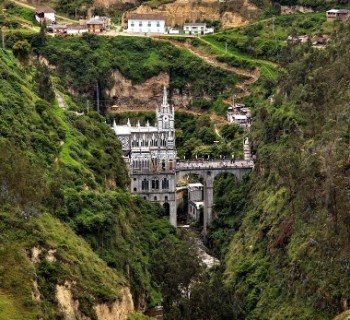Rivers of Colombia

Magdalena is the largest river in the country, the basin of which is an intricate network of channels and branches. Other rivers of Colombia are no less interesting, for example, Caño Cristales.
Caño Cristales
This is the most famous river in Colombia, to the banks of which numerous guests of the country rush. It is interesting because the bottom of the channel is covered with multi-colored mosses and algae. At the same time, the Caño Cristales water is transparent to the point of absolute and does not hide the beauty of its bottom. By the way, translated from Spanish, Caño Cristales sounds like «crystal stream».
The waters of the river practically do not contain any impurities. There are no salts or minerals here. That is why there is absolutely no fish in Caño Cristales. And due to the fact that the water is completely transparent, rich shades are perfectly visible, despite the meter depth. The riverbed is somewhat reminiscent of a rainbow - there are scarlet, yellow, blue, green and black shades.
At the bottom of Caño Cristales, there are wells of natural origin, where, if you wish, you can swim and relax after a rather long journey. The best time to visit the river is the dry season (June-October), since you can admire the unusual colors only at this time.
Magdalena
Geographically, the river is located in the western part of the country and originates in the Andes. The total length of the waterway is 1550 km. The river was discovered in 1501 by the Spaniard Rodrigo de Bastadis. And according to tradition, she was given the name of the saint - Mary Magdalene.
It is the Magdalena that is the largest river in the country. Basically, the river is navigable. And the exception is the upper reaches, where there is a huge number of rapids and waterfalls. Magdalena flows into the Caribbean Sea, passing through the territory of the city of Barranquilla.
Unfortunately the river is very dirty. The same applies to its shores. But it is the trash that attracts many iguanas who feel great in it..
Sightseeing: on the banks of the river is the largest archaeological park in the country - San Agustin. Its total area is 310 square kilometers, and stone sculptures depict gods, people and animals.
Atrato
The source of the river is high in the Zitara mountains. The total length of the channel is 644 kilometers and 560 of them are navigable. And only when it flows into the Uraba Bay does the river delta form a huge swampy area. The Artato is fed by three tributaries - Truando, Suzio and Murri.
Atrato is distinguished by a fast current and high water content. During the rainy season, the water level in the river rises significantly, which threatens with floods. Atrato water is cloudy. The peculiarity of the river is gold-bearing sand.




